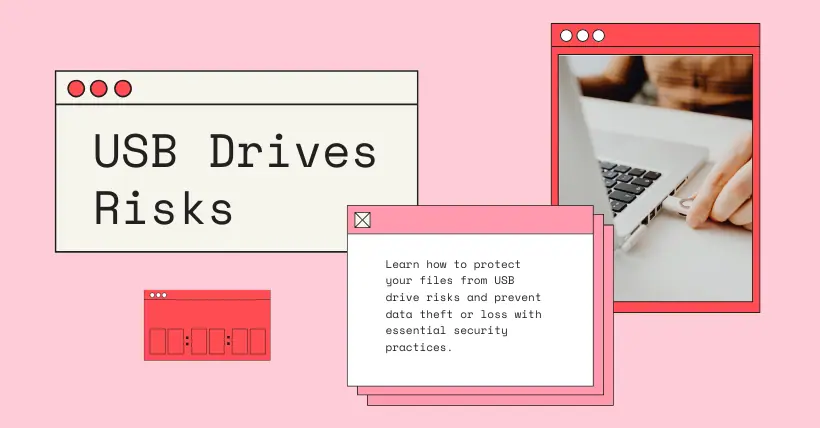In the digital age, USB drives, as convenient storage devices, are widely loved by everyone. We use them to copy data and transfer files; they are like a small “data station,” providing great convenience for our information storage and transfer. However, did you know that frequently editing files directly on a USB drive may bring unexpected problems and even damage valuable files and the USB drive itself?
Let’s first discuss this issue theoretically. The storage principle of a USB drive differs from that of the internal hard drive of a computer. A USB drive uses flash memory chips to store data. This storage method is relatively stable when reading data but has certain limitations when writing data. When we edit files on a USB drive, we are actually performing continuous write operations. Each time we save or modify a file, it means the USB drive must reallocate storage space and overwrite or move the original data. This process not only increases the read and write frequency of the USB drive but also easily leads to data fragmentation, which can affect the drive’s performance and the integrity of the files.
Imagine the storage space of the USB drive as a warehouse filled with goods. When we frequently adjust and rearrange the goods, not only does it take time and effort, but it can also lead to confusion and errors. Similarly, with frequent editing operations, the internal storage structure of the USB drive becomes more complex, and the file system may encounter errors, ultimately resulting in file corruption or inaccessibility.
To better understand this issue, let’s conduct a small experiment. Suppose we have a brand-new 32GB USB drive. We copy an important document onto it and then, over the course of the next week, we edit and save this document every day. After a week, we may notice that the document opens significantly slower, and there may even be instances of garbled text or missing content. This is a small example of the potential risks of frequently editing files on a USB drive.
From a practical standpoint, frequently editing files on a USB drive is also more susceptible to external interference. For example, during the editing process, if the USB drive is suddenly unplugged or the connection between the USB drive and the computer becomes loose, the ongoing write operation will be interrupted, which can lead to file corruption or even cause the entire file system to crash. Additionally, using the USB drive on different computers, due to varying settings and environments, may trigger compatibility issues, further increasing the risk of file corruption.
I have personally experienced such a painful situation. Once, in a rush to finish a report, I stored all the relevant materials on my USB drive and edited them directly on the drive. However, during the editing process, my computer suddenly froze. When I rebooted the computer, I found that some of the files on the USB drive were no longer accessible, and the content I had painstakingly written was lost. It was truly heartbreaking.
Moreover, the quality and lifespan of the USB drive itself is also a crucial factor. Some cheap or poor-quality USB drives may have substandard flash memory chips that cannot handle frequent read and write operations. Prolonged use and frequent editing can cause these USB drives to “retire early,” and they may even become unrecognizable or unreadable.
So, what should we do to protect our files and USB drives? First, try to avoid editing files directly on the USB drive. If you need to modify a file, it’s better to copy it to your computer’s hard drive, edit it, and then save it back to the USB drive. Second, develop good usage habits: before unplugging the USB drive, ensure that no read or write operations are in progress, and use the system’s safe hardware removal function to eject the USB drive. Lastly, when purchasing a USB drive, don’t focus solely on price—choose a product that is of reliable quality and from a reputable brand.
In conclusion, while the USB drive is a helpful tool in both work and life, we must use it correctly and not allow it to become a “danger zone” for our files. Only by doing so can we ensure the safety of our files and the long-term use of our USB drives, allowing this small storage device to serve us better.
Let’s cherish and protect our data, avoid the bad habit of editing files on the USB drive, and safeguard our digital life!
Related:

Disclaimer:
- This channel does not make any representations or warranties regarding the availability, accuracy, timeliness, effectiveness, or completeness of any information posted. It hereby disclaims any liability or consequences arising from the use of the information.
- This channel is non-commercial and non-profit. The re-posted content does not signify endorsement of its views or responsibility for its authenticity. It does not intend to constitute any other guidance. This channel is not liable for any inaccuracies or errors in the re-posted or published information, directly or indirectly.
- Some data, materials, text, images, etc., used in this channel are sourced from the internet, and all reposts are duly credited to their sources. If you discover any work that infringes on your intellectual property rights or personal legal interests, please contact us, and we will promptly modify or remove it.



